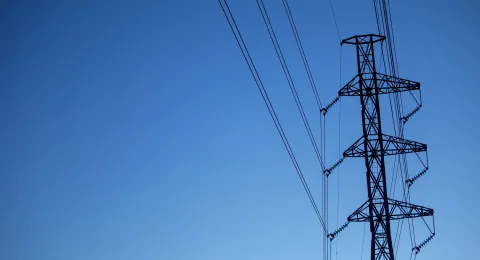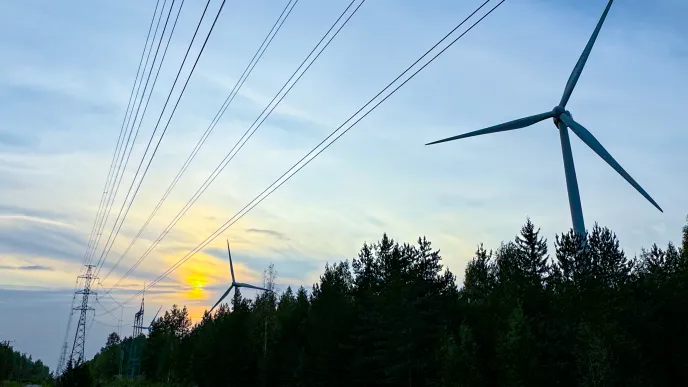Energy-based electricity markets in the current electricity market model effectively guide electricity production, consumption, electricity storage, and the use of transmission capacity as well as investments in these areas.
In a system based on markets organised according to economic principles and distributed decision-making, competition among actors produces efficient solutions for society. Electricity markets were originally created to increase efficiency and customer-centredness in the sector, and in those respects, they have functioned successfully.
Electricity markets have functioned efficiently
The markets have effectively guided the fundamental transformation of Finland's electricity system, where carbon dioxide emissions have decreased by 80 percent, supply security has remained strong, and electricity prices are among the lowest in Europe. The decrease in carbon dioxide emissions is due to the emissions trading system, which effectively integrates the external effects of greenhouse gas emissions into market price formation.
There has been a massive shift in electricity production technologies, with renewable energy sources – wind and solar power – becoming the most cost-effective ways to generate electricity. Finland has an excellent competitive position internationally, particularly in onshore wind power. It is also supported by a strong national main grid. Battery technology is rapidly advancing, creating more opportunities to balance electricity consumption and production, especially for managing short-term fluctuations.
Electrification needs to be increased further
The most important measure to reduce greenhouse gas emissions is to eliminate fossil fuels and raw materials. This applies to energy production, industry, heating, and transportation. Energy production must shift to emission-free forms, which Finland has mainly done already. In terms of industry, heating, and transportation, the solution is electrification – direct electrification whenever possible, and so-called indirect electrification with hydrogen whenever it is not.
The electrification of industry, transportation, and heating fundamentally changes the operation of the energy system. When industry learns to better utilise fluctuating wind power production, it creates flexibility in electricity demand from the perspective of the electricity system. A major question is the storability of hydrogen and the flexibility of hydrogen end-use in the future. In terms of heating, heat pumps and electric boilers connected to the district heating system and heat storage adjust according to the price of electricity. Electric heating also provides flexibility at the household level. The electricity system’s security of supply improves when actors develop the flexibility of their operations based on market conditions and electricity prices.
Spot price variation is part of the future electricity system
Varying electricity prices enable different actors to take advantage of the flexibility of their operations in production, consumption, and storage in the electricity markets. This brings flexibility to the entire electricity system – in both daily operation and long-term development of operations. Actors seeking flexibility can make bilateral or financial market contracts. Consumers can also choose to purchase electricity at a fixed price.
As industry continues to electrify, competitive electricity is essential for maintaining industrial competitiveness. Industry needs to take advantage of electricity price fluctuations to stay competitive. The development of flexibility is also a key component of business competitiveness.
Using government subsidies to eliminate price fluctuations in the day-ahead markets would lead to an expensive electricity system and become very costly for electricity users. It should also be noted that Finland is not an isolated island but part of the European electricity markets, where electricity pricing ultimately takes place.
Supply shortages increase political risks
The operation of the energy system is evaluated as a whole, with indicators including the price of electricity, emissions, and supply security. At an annual level, Finland is currently self-sufficient in terms of electricity. There is no shortage of electrical energy, and the electricity system does not require more basic power. On average, electricity is affordable and readily available. Emissions from electricity generation are low.
The strong weather dependency of production may, however, threaten the availability of electricity especially during long cold, low-wind periods during the winter. In such conditions, exceptionally high prices are possible. This challenges the acceptability of the electricity system and Finland’s reputation as a target country for industrial investments. Political pressure to intervene in market operations due to high prices increases during supply shortages, which may lead to rushed solutions that endanger long-term development.
The traditional risks of the electricity system, such as failures in large nuclear power plants or significant transmission connections, are still relevant. They can also cause electricity availability issues and exceptionally high prices, leading to political interventions. In the past, these risks were mitigated with condensing power based on fossil fuels. However, this type of production no longer exists.
Solution: cost-efficient support mechanism
Risk assessments show a particular need for solutions that address weekly supply shortages. In the current situation, this means further flexibility in electricity production. Continuous development of flexibility in electricity consumption and battery storage is underway to manage shorter fluctuations.
Why does the necessary production capacity not emerge through market mechanisms? Actors face a high risk when investing in production capacity, the need for which is very difficult to predict. The situation may change when the electricity system evolves and actors obtain more information on that evolution.
The future involves uncertainties, and the solution should aim for an efficient, clean, and reliable electricity system by 2030.
Support mechanism features to consider
- Support should focus on new investments in Finland. The support would fund part of the investment costs. Otherwise, the capacity operates in the markets according to the owner's decisions, based on the same principles as other production facilities. The model would be “fossil-free flexibility”.
- Support should be defined cost-efficiently through auctions. To maintain a competitive environment, no single actor should be given too large a market share of the supported capacity.
- Technical constraints: The minimum requirement is that the capacity must start during periods when forecasts indicate a tight power situation. Capacity that can start within an hour could address forecast errors in the power system and failures of large nuclear power plants and transmission connections. Especially for long low-wind periods and prolonged technical failures, the capacity must be able to produce continuously for several weeks.
- The mechanism would also support the security of supply. The goal should be that no separate power or security reserves are needed, eliminating their costs for society. The geographic placement of the capacity should also be guided. In this way, the capacity would most effectively support the power system's operation and security of supply, as it could also enable isolated operations during disturbances.
- The necessary amount of capacity and, if necessary, the locations of power plants would be determined by the electricity transmission system operator Fingrid.
More information






